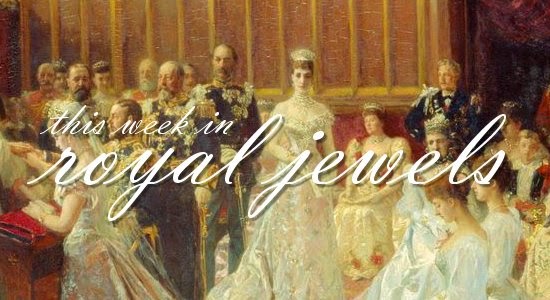The topaz, the versatile birthstone of everyone with a November birthday, comes in varied sizes and colors. Today, let’s have a look at one of the most gorgeous topaz sets in any royal collection: the demi-parure of Russian pink topazes that belongs to the Swedish royal family.
I’m already anticipating your first question: if the set is called the “Russian” demi-parure, why is it in the royal vaults in Sweden? Even though the set is in Bernadotte hands today, its history begins in early nineteenth-century imperial Russia. In 1804, Grand Duchess Maria Pavlovna, one of the daughters of Tsar Paul I of Russia, married Carl Friedrich, the Hereditary Grand Duke of Saxe-Weimar-Eisenach. Maria Pavlovna was a granddaughter of Catherine the Great and the sister of various European rulers and consorts, including Tsar Nicholas I, Queen Catherine of Wurttemberg, and Queen Anna of the Netherlands.
The marriage of the daughter of an emperor required important presents, and this pink topaz set was among them. Maria Pavlovna’s father, Tsar Paul, presented her with the set as a wedding gift. The large pink topazes are surrounded with glittering diamonds, and the set consists of four pieces: a large, impressive necklace, a small round brooch, and a larger, multi-stone brooch with a floral motif. Two of the pendants from the larger brooch can also be detached and worn as earrings. The set is generally called a “demi-parure” because it lacks a tiara.
Carl Friedrich and Maria Pavlovna had three surviving children: Marie, Augusta, and Karl. Augusta, the middle child, was the one who inherited her mother’s pink topazes. She married Kaiser Wilhelm I of Germany in 1829. The marriage was not a smashing success, but it did manage to produce two children: Kaiser Friedrich III (who married Princess Vicky, daughter of Queen Victoria and Prince Albert) and Louise, who wed Grand Duke Friedrich of Baden in 1856.
Augusta’s decision to leave the pink topazes to her daughter, Louise, set the gemstones on a direct path to Stockholm. In 1881, Louise’s daughter, Princess Victoria of Baden, married Crown Prince Gustaf of Sweden. She became Sweden’s queen consort in 1907. Although there are lots of portraits of Victoria wearing items from the Bernadotte collection, I’ve never seen a photograph of her in the topazes. But there may be a reason for that. Grand Duchess Louise didn’t die until 1923, so Victoria didn’t inherit the set until she was sixty. By that time, Victoria had largely withdrawn from court life and was spending much of her time in Italy.
But although she did not make significant use of her mother’s topazes, Victoria did an important thing that secured their future in Sweden: on her death, she bequeathed them to a jewelry foundation, which means they will stay in Swedish hands. Both queens of Sweden who have followed Victoria — Queen Louise and Queen Silvia — have made major use of the topazes, often wearing them with the enormous Braganza Tiara or the more delicate Connaught Diamond Tiara. Princess Sibylla, mother of the present Swedish king, also wore the topazes.
Queen Silvia selected the set for one of her first portraits as queen, pairing them with the Braganza Tiara. She’s also worn the larger brooch from the set as a headpiece. She’s worn the topazes on a number of important occasions since, including the wedding of her eldest daughter, Crown Princess Victoria, in 2010 — more than two centuries after they were made.


